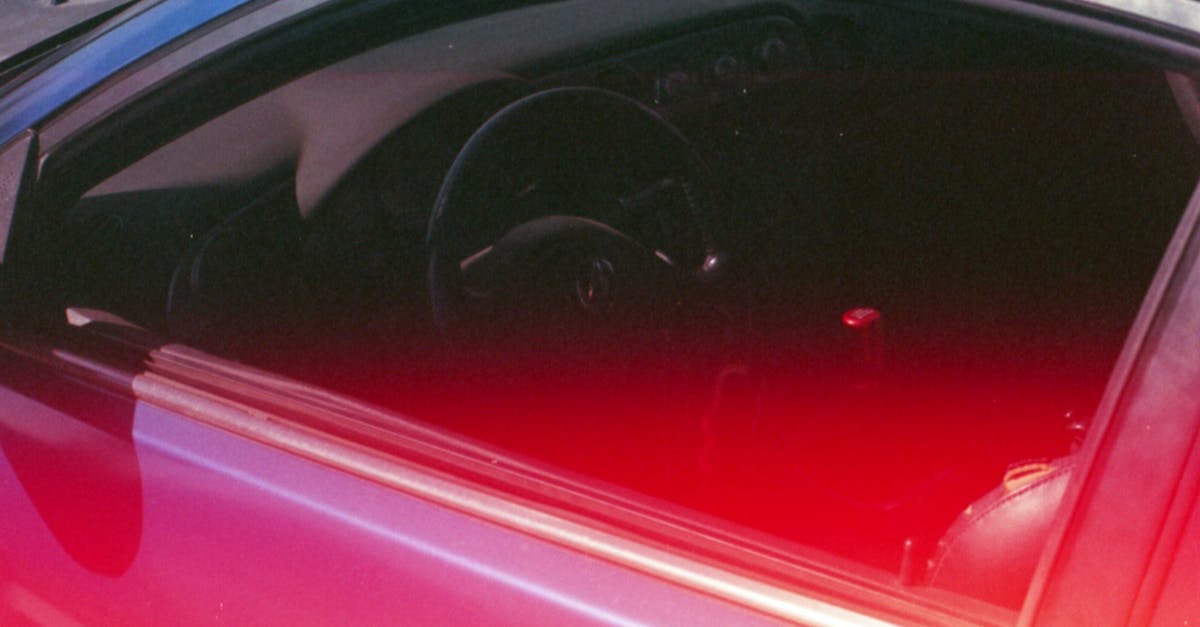Exemptions to Window Tinting Regulations in South Australia

Table Of Contents
Application Process for Exemptions
In South Australia, individuals seeking exemptions from window tinting regulations must follow a structured application process. This typically begins with gathering necessary documentation, including details about the vehicle and the specific tinting requirements sought. Applicants should ensure they have valid reasons for the exemption, whether related to medical conditions or specific vehicle uses.
Once the relevant documents are collected, the application can be submitted to the appropriate authority. It may be necessary to provide additional information or attend an interview if requested. Understanding the requirements beforehand can streamline the process and improve the chances of approval.
Steps to Obtain Tinting Permits
Applying for tinting permits involves several clear steps that need to be followed meticulously. First, it is essential to gather all necessary documents, including details about the vehicle, the type of tint being requested, and any medical evidence if applicable. Once the documentation is organised, the next step is to fill out the application form provided by the relevant authority, ensuring that all information is accurate and complete to avoid delays.
After submitting the application, the waiting period for approval must be observed. During this time, the authorities may conduct a review, which can include inspections or additional questions related to the tint specifications. It is advisable to keep track of the application process by contacting the department if there are significant delays. Following approval, the permitted tinting must comply with the regulations stated in the permit to avoid penalties.
Understanding Visual Light Transmission (VLT)
Visual Light Transmission (VLT) is a critical measurement in window tinting regulations. It indicates the percentage of visible light that passes through tinted windows. This measurement is pivotal for ensuring safety and compliance with legal standards while providing comfort and privacy to vehicle occupants.
Different types of tint films offer varying levels of VLT which can significantly impact both aesthetics and functionality. Understanding how VLT affects visibility is essential not only for adhering to the law but also for maintaining optimal driving conditions. Ensuring that window tinting meets specific VLT guidelines helps prevent potential legal penalties and promotes safety on the roads.
Importance of VLT in Tinting Regulations
Visual Light Transmission (VLT) plays a crucial role in the assessment of window tinting compliance within South Australia. It refers to the percentage of visible light that can pass through the tinted window. Understanding VLT levels is essential because they determine how much natural light enters a vehicle, influencing visibility and safety for both drivers and pedestrians.
Regulations stipulate specific VLT percentages to maintain a balance between comfort and functionality. Tints that are too dark can impair a driver's vision, especially during low-light conditions, increasing the risk of accidents. Adhering to VLT standards ensures that vehicles remain safe and roadworthy while providing the desired level of protection from harsh sunlight.
Common Misconceptions
Many people believe that any window tinting can be easily modified without consequence. This misconception often leads to confusion about legal limits and the need for proper permits. In reality, specific regulations govern the allowed percentages of tint for vehicles, and exceeding these limits can result in fines or required removals.
There is also a prevalent myth that car owners can tint their windows as dark as they please if they own the vehicle for personal use. This is not accurate. Even privately owned vehicles must adhere to the stipulated legal requirements regarding window tinting, which are in place to ensure safety and visibility on the roads. Understanding these laws helps avoid unnecessary complications and promotes compliance.
Debunking Myths about Tinting Laws
Many people believe that window tinting is universally illegal for all vehicles. This misconception stems from a lack of understanding of the specific regulations in different regions. In South Australia, there are exemptions available for certain circumstances. Vehicles used for medical reasons or those equipped with specialised equipment may be granted approvals that allow darker tints than typically permitted.
Another common myth claims that all window tints provide the same level of heat rejection and UV protection. This is not the case, as the effectiveness of a tinting film is determined by its specific composition and the percentage of visible light it allows to pass through. Higher-quality tints can significantly reduce heat and block harmful UV rays, while inferior products may leave users unprotected. Therefore, choosing the right type of window tint is crucial for both compliance with regulations and achieving the desired benefits.
FAQS
What are the main reasons for seeking a window tinting exemption in South Australia?
Common reasons include medical conditions that require reduced sunlight exposure, privacy concerns, and specific vehicle modifications or uses that necessitate different tint levels.
How long does the application process for window tinting exemptions typically take?
The timeframe can vary, but on average, the application process may take several weeks, depending on the complexity of the request and the volume of applications being processed.
What is Visual Light Transmission (VLT) and why is it important?
Visual Light Transmission (VLT) measures the amount of visible light that passes through tinted windows. It’s important because regulations specify minimum VLT percentages to ensure safety and visibility while driving.
Are there any penalties for not complying with window tinting regulations in South Australia?
Yes, non-compliance can result in fines, mandatory removal of illegal tinting, and potential issues during vehicle inspections.
Can I appeal the decision if my application for a tinting exemption is rejected?
Yes, individuals can typically appeal the decision by following the appropriate processes outlined by the relevant authorities, providing additional information or clarification to support their case.
Related Links
How to Obtain a Window Tinting Exemption in AdelaideUnderstanding Special Permits for Window Tinting in Adelaide
The Role of Local Councils in Granting Tinting Exemptions
Impacts of Exemptions on Residential Window Tinting Projects